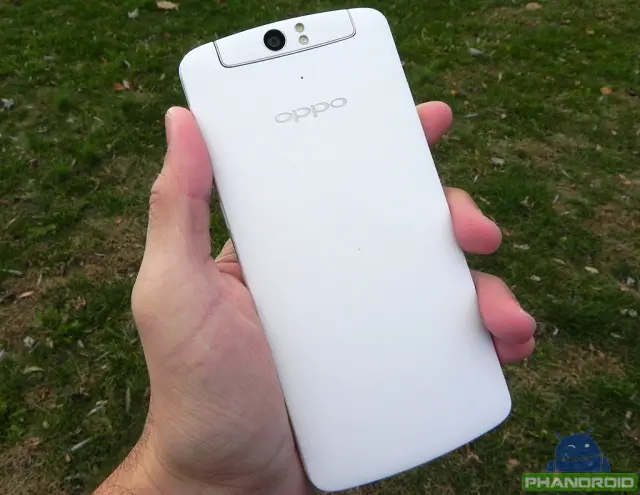
When Oppo announced the N1, they boasted that their latest smartphone would bring back innovation to the smartphone space. As time goes on, it’s widely accepted that smartphones will get faster internals, get thinner, weigh less, and continue to incorporate larger screens. Oppo set out with the N1 to add true innovation to the smartphone, not to just to continue playing the numbers and specs game that most manufactures play with every new release. Has the Oppo N1 held true to their word? Let’s find out.
Hardware: When it comes to hardware, the Oppo N1 has a lot of surprises, some very unique.
Even before I touched the N1, I was impressed with the immaculate retail packaging from Oppo and the fact that this phone shipped with accompanying earbuds.
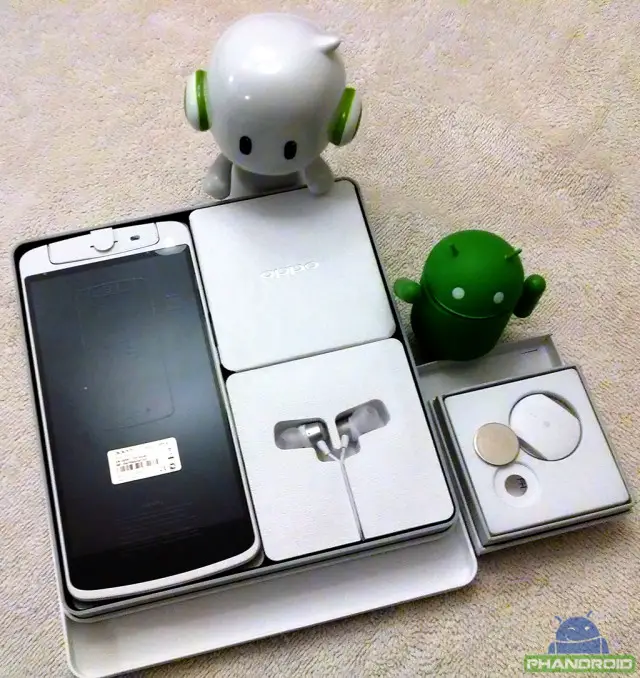
When you first look at the N1, you immediately notice the sheer size of the display. The Oppo N1 is a very large phone with an equally large screen clocking in at 5.9 inches, making it almost feel like a small tablet for some. The IPS screen packs Gorilla Glass 3 and supports full 1080p (1920 x 1080) with 377 pixels per inch.
The IPS screen on the Oppo N1 has wide viewing angles and has vibrant, bright colors. While putting the N1 through the daily paces, I was able to easily view the screen outside in the sunlight.
While you’re holding the N1, admiring that gorgeous screen no doubt, you’ll immediately be amazed with the N1’s luxurious feel. Besides feeling completely solid and evenly weighted, the N1 feels elegant in your hand even though it weighs 213 grams and has dimensions of 170.7 x 82.6 x 9 mm.

When it comes to actually using the N1, those good looks and perfect body make the N1 a bit hard to use sometimes, because size does matter. Being a large phone, I found myself unable to complete most tasks with just one hand as I could with phones that have screens 5 inches or smaller. Sometimes I felt like the N1 was just too big.
Oppo has incorporated ways to combat this size issue with additional hardware features such as rear hardware controls dubbed O-Touch. With the N1’s O-Touch controls, you’re able to swipe left, right, up down, and tap to complete a wide variety of tasks such as scrolling through the app launcher, flicking through photos, browsing the web, or even tapping to activate the shutter on the camera. The rear controls do take a little bit getting used to. I often found myself taking photos too early by tapping or scrolling through my photo album while trying to take a photo. With time though, I was able to get used to rear Controls and found myself using them more and more, but eventually disabled them because I found them to be somewhat of a nuisance when not intending to use them.
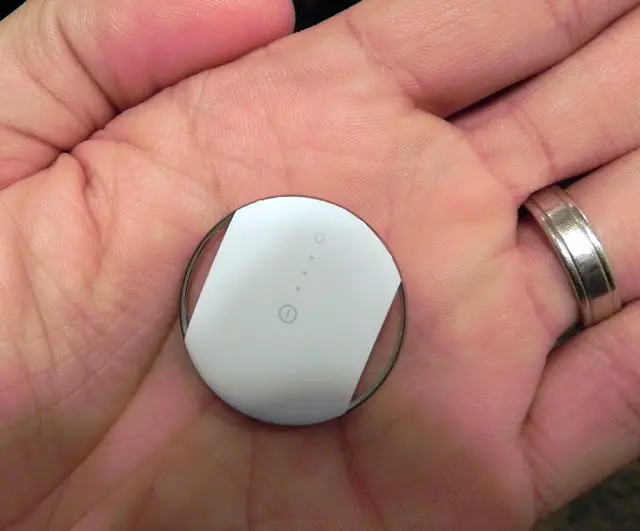
Next up is the O-Click, which is a Bluetooth accessory device included with the N1. The O-Click is a key-ring sized fob with a button that has a couple of functions that will make you want to use this device all the time. That said, if you’re like me, once the novelty wears off, you’ll probably never use it again.
The O-Click includes a find my phone feature, where tapping the O-Click button twice rings your N1. Of course, this will only work if your O-Click and N1 are within Bluetooth range of one another, which is about 25-30 feet. The O-Click is prepared to help tackle that Bluetooth range issue by making the N1 ring if the O-Click is about to get out of range. This is particularly useful if you’re absent minded with your smartphone while out in public, it’s a nice security feature. And lastly, the O-Click acts as a remote camera shutter, which is very useful for taking group photos or highly unique selfies.
Speaking of selfies, let’s talk about the most unique feature of the Oppo N1, the 13 megapixel camera that has a f/2.0, 6-element lens, dual LED flashes, and the entire camera rotates over 206 degrees going from rear shooter to front facing camera in an instant. Oppo put the N1 through vigorous testing, passing a 100,000 time rotation test. That means you can rotate the N1’s camera 40 times a day for 7 years, making the movable part quite reassuring that it won’t easily break.
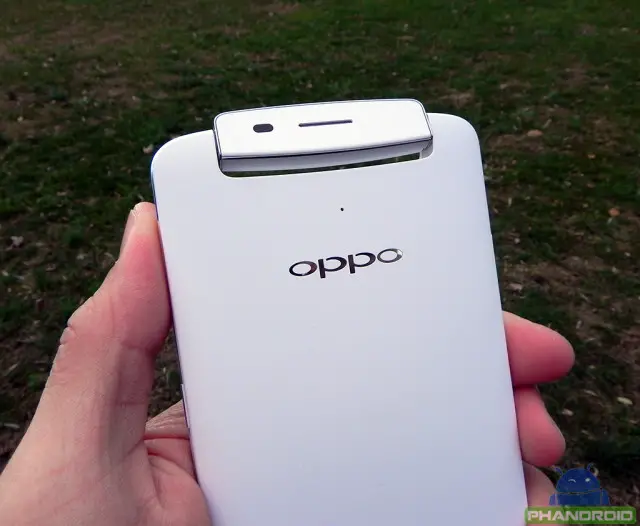
The included camera software sports many featured you’d expect in a camera like this. The N1 includes a slow shutter feature of up to 8 seconds, HDR image processing, and Oppo’s famous beautification feature that provides an air-brush like feature and allows one to apply a wide variety of make-up options.
The N1 takes gorgeous, high quality photos, shoots impressive HDR photos, and is pretty much the dream phone for a teenage girl obsessed with selfies. I loved reviewing this device simply because of the camera. It’s probably the best camera I’ve ever used on a phone. Check out the included gallery below to see examples of normal shots, and HDR mode.
When it comes to Android phones, everyone wants to hear about the camera quality and how how long the battery lasts. It seems like we’re always forced to choose between the lesser of two evils in this regard. The Oppo N1 though seems to have the best of both worlds. According to Oppo, the N1 should get 350 hours of standby time and 780 minutes of talk time. The 3610mAh battery on the N1 lasts forever. Well, maybe not forever, but it will definitely get you through two days of usage or 7-8 hours of screen on time, whichever comes first.
On the bottom you’ll find hardware keys, something that just needs to go away. To make matters worse, they’re backwards from what one would consider the standard configuration, making them pretty hard to get used to.
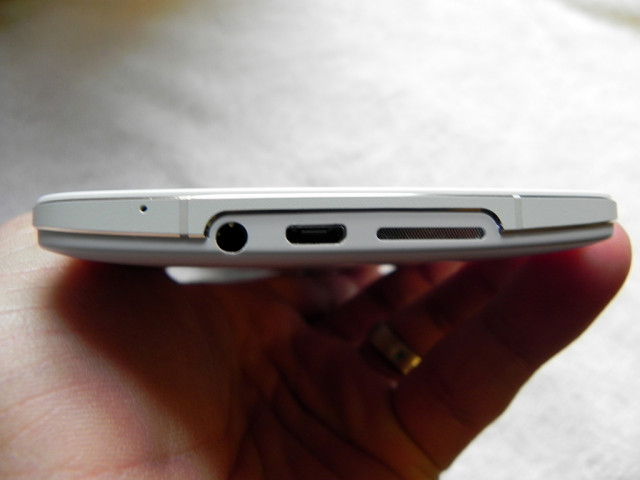
On the underside of the N1 you’ll find your standard audio jack, micro USB port, a microphone, and the speaker. The speakers are definitely louder than most Android phones, easily allowing me to jam to the latest tunes and I wasn’t afraid of missing phone calls due to a quiet ringer either. Along the side you’ll find both the power button and volume rocker which feel great to the touch, but can be a bit hard to find from time to time only because the Oppo N1 is bigger than what I’m used to carrying around day to day.
As for connectivity, the N1 supports GSM and WCDMA networks only. That means you’ll be able to use it on AT&T and T-Mobile here in the USA and most other places around the world. If you’re on Sprint or Verizon, the Oppo N1 won’t work. Sadly, the Oppo N1 doesn’t support LTE either. If you can get by with HSPA+ then, so be it. If LTE is a requirement for you, as it should be in 2013, the N1 might not be for you.
The Snapdragon 600 quad core processor, Adreno 320 GPU, and 2GB of RAM perform as expected. The N1 felt snappy while moving around through the phone’s features and while putting it through the daily grind. I’m really not one for specs anymore, the Moto X helped with that, but I’ll include some benchmark numbers as I know many readers will be chomping at the bit for them. The Oppo N1 scored 26,544 on AnTuTu Benchmark, right between the HTC One and the Samsung Galaxy S4, other Android phones with similar internals.
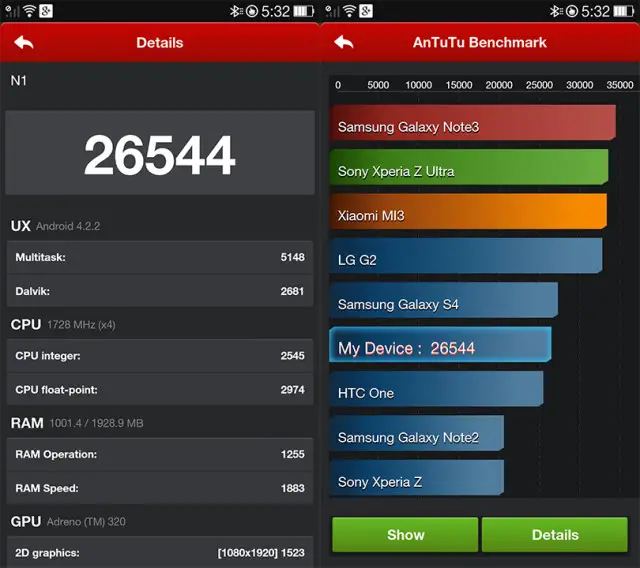
Oppo N1 full hardware specs:
- OS: ColorOS with Android 4.2.2 / CyanogenMod coming soon
- Display: 5.9-inch IPS Full HD 1080p
- Processor: 1.7 GHz Qualcomm Snapdragon 600 Quad Core
- GPU: Adreno 320
- RAM: 2 GB
- O-Touch: Slide up or down, left or right, tap, double tap and long press for different functionality
- O-Click: Bluetooth accessory for remote control and security purposes.
- Camera: 13-megapixel sensor with dedicated ISP, FlashDual-mode LED, Aperture f/2.0
- Scene modes: Normal, Panorama, High Speed, Rewind, Beautify, and Slow Shutter
- Storage: 16 / 32 GB
- Dimensions: 170.7 x 82.6 x 9 mm
- Weight: 213 g
- Sensors: Distance sensor, Light sensor, G-sensor, 4D Gyroscope
- Battery capacity: 3610 mAh
- GSM: 850/900/1800/1900MHz
- WCDMA: 850/900/1700/1900/2100MHz
- Other connectivity: USB OTG, Bluetooth 4.0, 5G Wi-Fi 802.11ac, Wi-Fi Direct, Wi-Fi Display, GPS
Software Part 1: ColorOS: I think Android is in there somewhere.
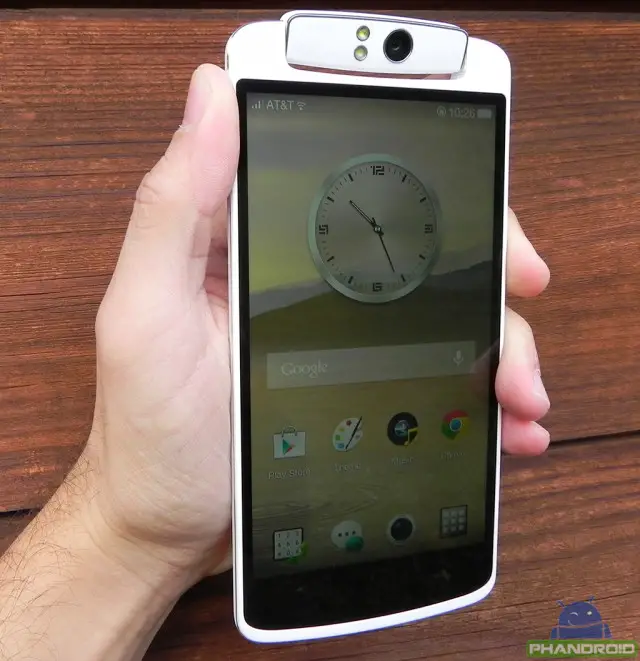
Oppo’s version of Android, dubbed ColorOS, comes packed with a whole lot of interesting features you won’t find from traditional Android OEMs and if you’re familiar with the popular Android ROM MIUI or Xiaomi, Oppo’s theme engine will seem very similar.
ColorOS is a heavily skinned or themed version of Android. In fact, it doesn’t even look like Android at all. Some might be a fan of the depth of Oppo’s customization feats, while others, such as myself, miss the look of stock Android.
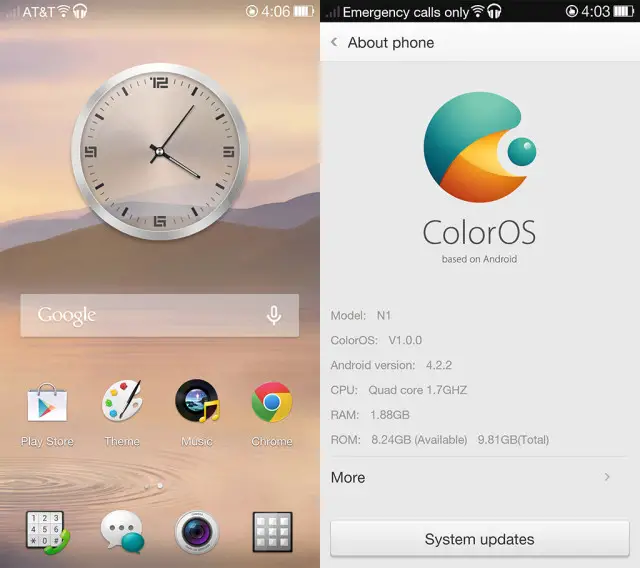
If you’re into customizing the look and feel of your smartphone, the theming application that comes with ColorOS allows you to choose from dozens of themes just by browsing an online repository. Themes change your wallpaper, customize your icons, and can even completely change the functionality of your lockscreen. Simply put, ColorOS is a themer’s dream.

On the home screen, ColorOS includes a special set of widgets called ‘Exclusive Space’ which take up an entire home screen (don’t worry, you can add more). The included spaces are for the camera and for music. The camera space allows you to take photos directly from the widget, without opening the camera app through a nifty viewfinder built into the widget itself. Once you snap a photo, the image gets added to that space in a special photo widget with a date and timestamp. This allows you to scroll through them all, reviewing your memories without leaving your home screen. The music space isn’t as interesting, but there for your use if you have locally stored songs to play.
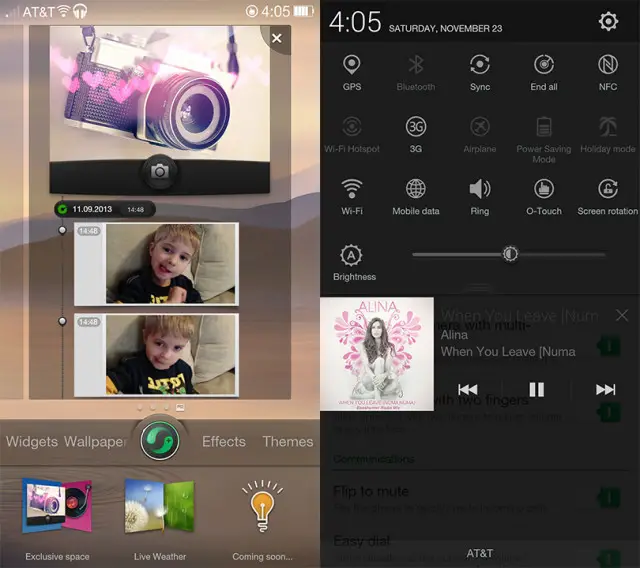
Beyond themes, Oppo packed a few interesting applications and features into their OS, including gestures, O-Cloud, application encryption, application permissions, guest mode, holiday mode, and data saving features.
The included gesture and motion features allow you to launch various phone tasks by just moving your fingers around the screen. Gestures allow you to launch the camera, control the volume, take a screenshot, and you can launch the flashlight, control music, or double tap the screen to wake up the N1 all while the screen is off. Besides the included gestures, Oppo’s ColorOS allows you to create your own gestures, such as drawing a plus sign to open Google+. In my day to day testing, I found some gestures more useful than others and I ended up turning most of them off while gaming. There’s nothing like trying to do an epic 720 rotation in Riptide G2 and watching the system volume go up and down instead.
Additional time saving features on the Oppo N1 allow you to rotate the camera to launch the camera app, flip the phone to mute it when receiving a phone call, automatically dial the contact on the screen when placing the phone up to your ear, and disable hands-free if you pick up the N1 while using a Bluetooth earpiece.
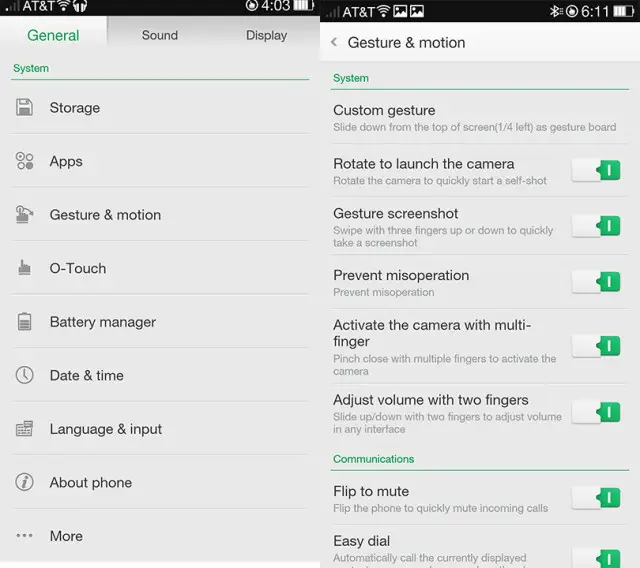
The included O-Cloud service allows users to backup their contacts, which seems redundant seeing as Google syncs your contacts, backup your SMS to the cloud, and find your phone in the event that you lost it, which once again seems redundant now that Android Device Manager has come to fruition.
Guest Mode can be configured to hide private contacts, photos, videos, and even hide applications from other users. Unlike other guest modes or multi-user implementations, Guest Mode on the Oppo N1 is activated by simply unlocking the phone with the guest password or guest pattern. If the secondary guest method is used to unlock the phone, guest mode is immediately activated. To exit, you simply lock the phone and unlock with the owner method and you’re good to go. Those of you with little rugrats running around your house will find this very useful. How many times has your little loved one accidentally called, texted, or got into something they shouldn’t? It happens. Guest Mode makes those accidents a thing of the past.
As if Guest Mode wasn’t enough, application security can be taken a step further with the Application Encryption feature. This feature, while sounding extremely security conscious is a bit misleading. The feature does not encrypt selected applications, but instead allows you to setup per-application passwords and security patterns.
Next up is Holiday Mode, which is simply an extended privacy mode. When enabled, calls and notifications from contacts that aren’t white-listed will be muted when the screen is off. However, you can still be reached in an emergency if the contact calls you 3 times within a 3 minute period.
The N1 also comes with a Data Saving application which is essentially a firewall and resource control tool, allowing you to pick and choose which apps can consume network data and CPU while running in the background. If you’re on a small, limited data plan, this could come in handy.
The Verdict: The Oppo N1 is a big ass phone with a big ass camera
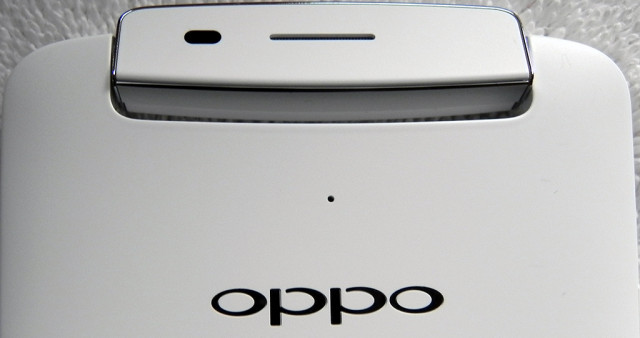
ColorOS is faster than I had expected. Normally when an Android OEM themes and customizes Android’s UI as much as Oppo has, you see lag through the user interface. This is something that I didn’t see or wasn’t noticeable in my experiences. While having Android this heavily customized might not be for some, Oppo has done a fine job providing visual eye candy for those that need it. For those that don’t need it, stay tuned.
Oppo’s N1 was built with the utmost quality in mind, boasting an elegant look and feel, an innovative camera, and a battery that just won’t quit. Some hardware features such as O-Click or O-Touch seem to only be beneficial for certain users or useful in certain scenarios. If you need a large screened phone with an impressive camera, and don’t need LTE connectivity, the Oppo N1 might be for you.
Software Part 2: CyanogenMod coming soon, No ETAs
As you might recall, the Oppo N1 will be the first commercial phone to ship with CyanogenMod installed. At the time of this writing, CM 10.2, Android 4.3, wasn’t available. Once Google finishes their certification testing, we’ll do a short review of the CM version of the Oppo N1. As a fan of CyanogenMod and general things #HOLOYOLO, I’m excited. CyanogenMod’s take on stock Android with this camera and battery life should be well worth the wait.

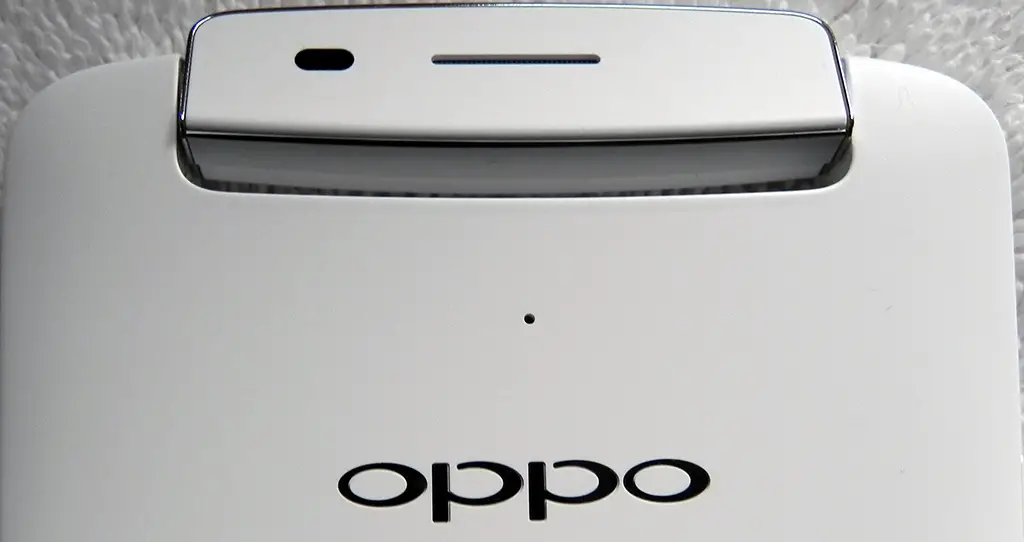

















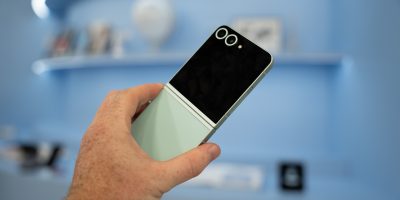





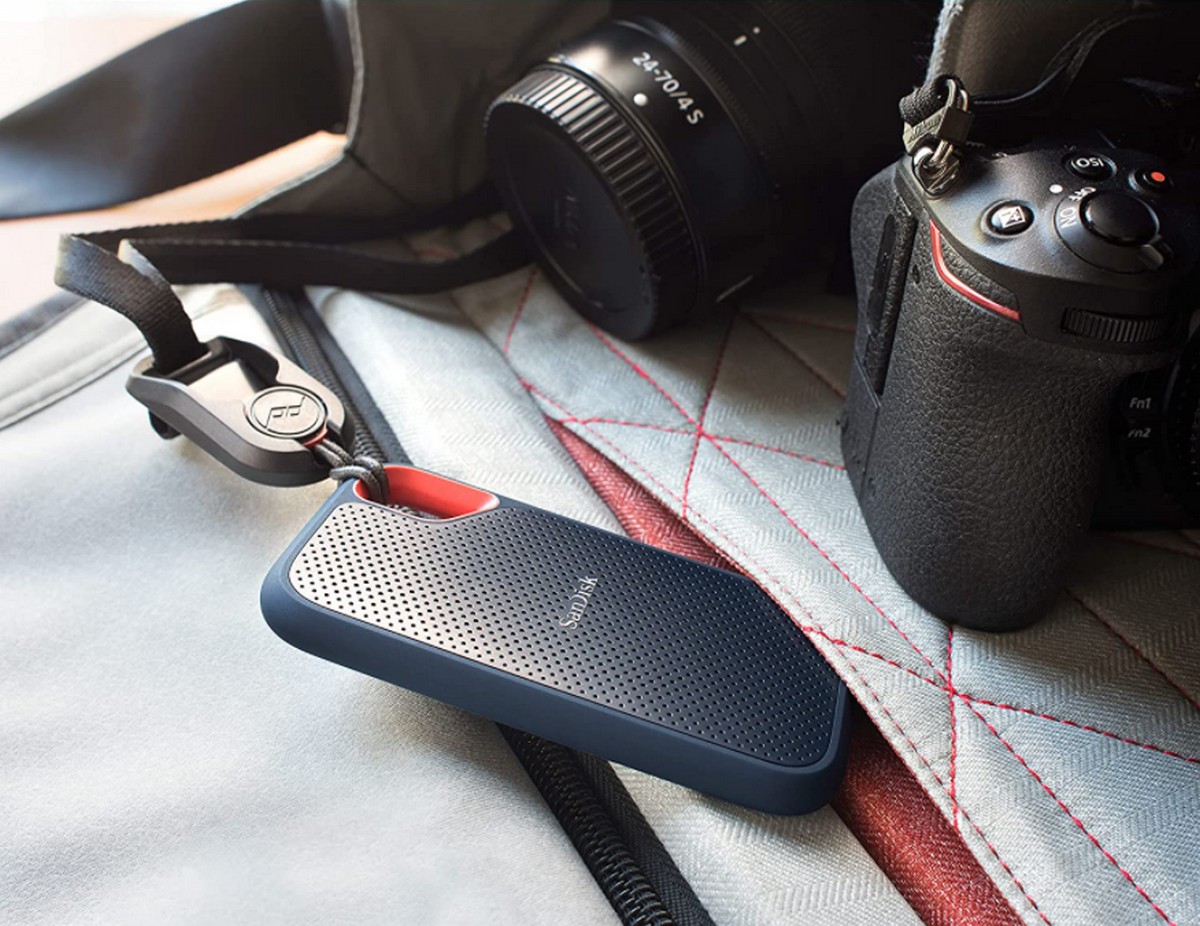
Seems like a great phone, although I’m surprised they’ve used the Snapdragon 600.
ah, no video review….
BTW when it will be available for sale?
The international version should be available soon. The price hasn’t been 100% confirmed but it Chinese version is available for roughly $570. Once we know the official price I’ll be sure to let everyone know.
great phone, i’ll wait for the successor with the successor of the snapdragon 800, and LTE radios are a must. also, how much are we talking for this beast? i’d have to buy an ATT iphone subsidized, sell it, then use the funds to buy it though. does anyone know of a better way to do this?
That sound like a really round about way to buy a phone. The N1 should be around $570 or so. I’ll update when the pricing is official.
i agree, but i see no other way to take advantage of the subsidized price i get with att. the difference between an MVNO and ATT is only about $10, so it doesn’t make sense for me to go prepaid and pay full price for a phone
Reviews after reviews…no release date state side though
It’s supposed to be early december, and like the Find 5, you’ll probably have to buy the unlocked version on oppo’s site.
I want da themes. Wasn’t customizability the whole point of Android?
still isn’t better than the HTC One
Thinking of big, I am still waiting for the Nexus 10 2. Anyone else out there think ASUS had it, Google canceled it due to issue and gave them the middle finger. As a result, Google looked to LG to compensate for them? This could be the reason we are still waiting……..
I’m so used to reading about Nexi devices as N4 and N5, so when I see N1 I involuntarily say Nexus One in my head.
If they would pack the CM one in’t a 5″ device, I’d be pretty interested. You should take a size comparison picture with the Note 3 and One Max.
I like to read about the extra features you don’t find in stock Android like their guest login. This is a very clever feature and its a wonder why stock Android doesn’t have this. The camera does look like a win from the pics but I don’t think I would like flipping it back and forth. The battery life is very impressive for that size of a screen… thats for sure. I’ll be curious to see if CM can make this battery life even longer!
@derekross:disqus you should try to take some low light and night time pics… I never really had a phone that had a good low light/night camera and it would be interesting to see what this phone could do.
Anyway, great overview… I enjoyed the in depth read on this device.
I like the cat
Far too big. If around 5″ would be interested. I also like physical buttons…
That’s NOT what she said!
Na, she never mentioned buttons…
Not bad at all… Still prefer the look of the HTC One. Best Android I have seen.
curious to know how the cam stacks up against nokia and htc for low light indoor shots. I also don’t see mention of ois so I assume it’s not present. everything else seems gimmicky.